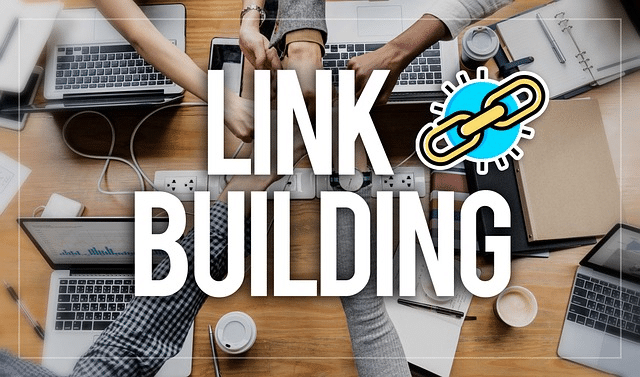
In 2023, link building remains one of the most critical ranking factors for SEO success. Simply put – the more high quality links you have pointing to your web pages from other websites, the better it will rank in Google search engine results.
But link building should not be treated lightly or approached with quick fix solutions. An effective link building strategy takes research, persistence, and a commitment to creating assets worth linking to.
In this comprehensive guide, we’ll walk you through everything you need to know to build an effective, long-term link building campaign, including:
- What are backlinks and why should you care about them?
- Common link building techniques (and which to avoid)
- Leveraging content marketing for organic links
- Mastering effective email outreach
- Utilizing advanced link prospecting strategies
If organic search traffic is critical for your business, this guide is intended to provide a blueprint to build high-quality backlinks sustainably over time.
Let’s dive in!
What Are Backlinks and Why Are They Important for SEO?

A backlink, also called an “inbound link” refers to any link from an external site pointing back to a page on your website. For example, if you create a blog post with a link citing an insightful statistic from our agency’s site, that represents a backlink to us.
Backlinks matter because Google’s search algorithm uses them as one of the top trust and authority indicators for a webpage. In simple terms – the more quality sites linking to your content, the stronger signal it sends to Google that your pages offer value around a topic worth ranking well for.
High quality backlinks can:
- Boost your domain authority and overall search visibility
- Improve keyword ranking positions for targeted terms
- Drive referral traffic from authoritative industry sites
- Enhance brand visibility as a thought leader
Earning editorial backlinks should be a central focus of any effective organic search strategy. But all links are NOT created equal…
Types of Backlinks and Link Attributes to Understand
As you get started with link prospecting and outreach, it helps to understand what constitutes a “high-value” backlink, and how that differs from other weaker signals.
We’ll briefly summarize the key link attributes to be aware of:
Editorial Links vs User-Generated Links
In context of value, there is a big difference between links deliberately placed by authors/editors vs. links created by general website users. For example an editor at an industry publication carefully referencing your data adds much more value than a random comment linking back to your site.
Follow vs Nofollow Link
By default, links pass “link equity” unless the nofollow attribute is added to the link code. Follow links pass equity, while nofollow links technically do not (although they still provide brand visibility). Ideally, you want to aim for as many follow, editorial links as possible to maximize ranking potential.
Contextual Anchor Text vs Branded/Raw URLs
Links containing your target SEO keyword(s) in the clickable anchor text provide the strongest signal of relevance around specific topics. However, too many “over-optimized” anchors appear spammy. A healthy link profile combines branded, URL, and contextually relevant anchor text links.
External Backlinks vs Internal Links
Both external links (from other sites/domains) and internal links (connecting pages within your site) have SEO value. But external links provide more powerful trust and authority signals (especially from reputable publications).
As you conduct outreach, these attributes give you criteria to assess the relative value of any given link opportunity. The ideal profile combines follow, editorial links with contextual anchors from externally reputable websites related to your industry.
Citations vs. Backlinks – What’s the Difference?
As you research link building, you may come across the terms “citations” and “backlinks” and wonder – what exactly is the difference between the two?
Citations refer to instances where your business name, address, and phone number are mentioned online across directories, review sites, and other listings. This helps establish consistency about your business information across the web.
Backlinks refer specifically to links from external sites pointing back to a page on your website. These inbound links help indicate authority and relevance for search engine optimization.
While related in purpose, there are a few key differences:
- Citations don’t link back to your website directly – they only mention your business details
- Backlinks refer to clickable hyperlinks pointing at your URLs
- Citations help more for local search results and maps
- Backlinks aim to boost organic search traffic and rankings
So in summary – citations refer to business directory mentions, while backlinks involve editorial website links pointing back to your site. Together, they make a powerful one-two punch!
Now let’s explore proactive link building techniques you can employ…
Leveraging Link Worthy Content
One of the most effective link building strategies is creating high-quality, engaging content assets that organically earn links over time. Search engines will rank your page higher with more quality links pointing to it. While difficult to accomplish, and can take significant time to produce, this is the most effective tactic to build high quality links.
The best content assets for earning links tend to be:
- Visual tools like images, interactive charts, and calculators that get linked and embedded frequently
- Original research studies and data analysis – if you compile an insightful competitive report or compelling survey data, many industry journalists will naturally link to reference your exclusive findings.
- In-depth guides and ultimate visual resources on topics relevant to your audience – the more comprehensive the resource, the more it gets organically linked to as THE go-to deep dive on that subject matter
The beauty lies in allowing your content to attract links organically over time by creating things your audience finds genuinely useful and interesting.
Attracting high value links from relevant websites requires thinking like an editor – what information would we LOVE to reference (if only it existed)?
Then make it a reality!
Promoting Your Content to Earn Backlinks
Once you create useful resources, the next step is actively promoting them to earn editorial links at scale through personalized outreach campaigns.
It may sound tedious but direct email outreach remains an indispensable way to land quality backlinks efficiently.
Here is a brief overview of the workflow:
- Conduct Competitive Link Analysis – Leverage tools like Ahrefs or SEMRush to identify sites recently linking to competitors that may also be interested in your content.
- Find Decision-Maker Emails – Use a Chrome extension like Hunter.io to find direct contact info for your outreach targets. Prioritize writers, editors and site owners – NOT generic info@ sites.
- Send Personalized Pitches – Write custom emails clearly explaining why your content deserves a mention on THEIR site specifically. Avoid spammy or overly “salesy” language.
For example:
Subject: Thought you’d find this interesting!
Hi [name],
I recently published a comprehensive guide to [relevant topic] with data I thought would make a great reference for your recent post on [related topic].
You can browse the guide at [URL].
Please let me know if you have any other questions!
Best, [Your name]
The key is catering your pitch specifically for each contact, clearly stating why your content belongs on THEIR site. Follow up politely if needed but don’t risk becoming overly aggressive.
Leveraging Guest Blogging for Quality Backlinks
Guest posting involves contributing articles to appear on popular industry blogs. If done right, it allows you to tap into valuable backlinking opportunities from reputable sites.
Keys to Ideal Guest Post Partnership
The key lies in initial content conceptualization. To catch editors’ attention amidst the noise, you must craft posts that clearly deliver value to THEIR audience specifically.
This starts with research to deeply understand your targets. Armed with these insights, consider industry debates, unanswered questions, or underreported topics their audience cares about. Then craft content centering THEIR reader experience first and foremost, over any link benefits.
Securing Guest Post Opportunities
Once you have an amazing concept tailored to each blog, use this outreach framework to connect with decision-makers:
- Research Editorial Calendars – Look for “Contribute” pages or upcoming theme announcements. Pitch concepts that align with planned content clusters.
- Skip Generic Emails – Phone calls, personalized videos on social media and personalized emails will help you stand out and spark engagement.
Remember – you are selling them just as much on your capabilities as a skillful writer able to consistently deliver exceptional content catered to their niche. Establish trust as subject matter experts around your chosen guest post theme.
Over time, you access more exclusive blogger networks to contribute to, allowing you to double down producing content finely tuned for each audience while expanding link diversity.
Broken Link Building Strategies
One advanced link building technique that is extremely effective but often overlooked is called broken link building.
The concept behind it simple:
Every website inevitably accumulates broken links over time as resources they previously linked to get taken down or renamed. But most site owners rarely go back through their old content to check for and fix dead links.
This presents a huge opportunity.
By taking the time to intentionally seek out authoritative sites with broken outbound links relevant to your content, you can swoop in as the hero and claim links that may otherwise be lost forever!
It may sound involved, but broken link building only requires two steps:
Identify Target Websites
Your first task lies in researching sites worth targeting for broken links. The best targets tend to be:
- Sites with high domain authority
- Respected publications
- Relevant to your industry
Finding Broken Links
Once you identify websites worth targeting, the next step involves actually hunting for broken links themselves. To surface dead links at scale, use the “site:” search prefix on Google.
For example, these searches can reveal broken pages on major news sites:
site:forbes.com “Error 404”
site:entrepreneur.com “page not found”
Now grab any relevant dead links tied to articles in your industry niche and craft personalized outreach emails.
Reaching Out to Fix Broken Links
Use this template outreach framework:
- Inform Them of Exact Broken Link Politely point out the dead URL on their site and the linked article title/context
- Suggest Your Content as Quality Replacement Briefly explain your content and why it closely matches the broken link’s original target – with the added benefit of being, ya know, live and working!
That’s it! Rinse and repeat across different sites.
Over time, you systematically build a network of powerful backlinks resurrected from the depths of 404 oblivion!
Risky Link Tactics to Avoid
Gray hat or “black hat” link practices may promise shortcuts, but often result in disastrous penalties from Google. Avoid tactics like:
- Article marketing networks
- Link exchanges
- Excessive anchor text optimization
- Paid links
- Private blog networks (PBNs)
Stick to established white hat tactics aligned with Google’s Quality Guidelines. While slower, these build a sustainable foundation for long-term success.
The Road to Search Engine Optimization Success
As search algorithms evolve, backlinks building retain importance for organic rankings. But genuine value creation forms the core of any sustainable link strategy – quick fixes bring temporary gains followed inevitable decline.
Focus on consistency over chasing overnight results. Monitor what resonates best with your audience and double down on those strengths. In time, the higher quality and uniqueness of your assets will earn recognition through word-of-mouth editorial links. Sites will WANT to reference your content because it adds value for their own readers.
In that sense, link building simply reflects your commitment to becoming a respected leader within your industry. So claim your authority – and let your assets speak for themselves!
The keys remain patience and persistence. But the long term payoff makes every effort worth the investment.
Now get out there and start linking!

